Abstract
Application of 4-amino-3,5,6-trichloropicolinic acid (picloram) to roots stimulated the production of ethylene in both mesquite [Prosopis juliflora (Swartz) DC. var. glandulosa (Torr.) Cockerell] and huisache [Acacia farnesiana (L.) Willd.] seedlings. Herbicide levels rose in tissues before we detected increased ethylene production. Rates of ethylene production by various parts of the plant paralleled herbicide concentrations. In both species, picloram caused loss of leaf movement and epinastic curvature of leaves and stems. Only huisache was defoliated by picloram. Rates of ethylene production increased before we observed any leaf movement or defoliation responses. Fumigation of plants with levels of ethylene, calculated to approximate those in herbicide-treated plants at the initial loss of leaf movement, caused the same symptoms as picloram treatment. The time sequence of ethylene fumigation and loss of the ability for leaf movement is compatible with the hypothesis that there is a causal relationship between picloram and ethylene production and loss of leaf movement.
Full text
PDF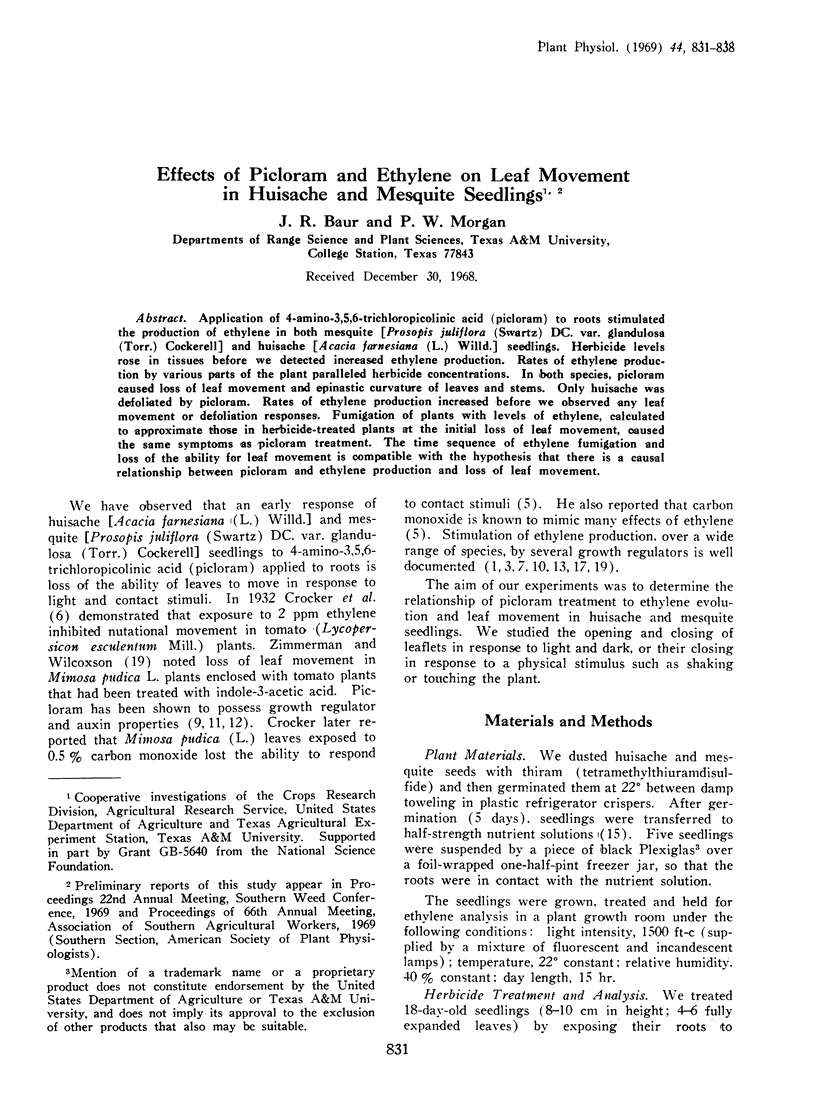
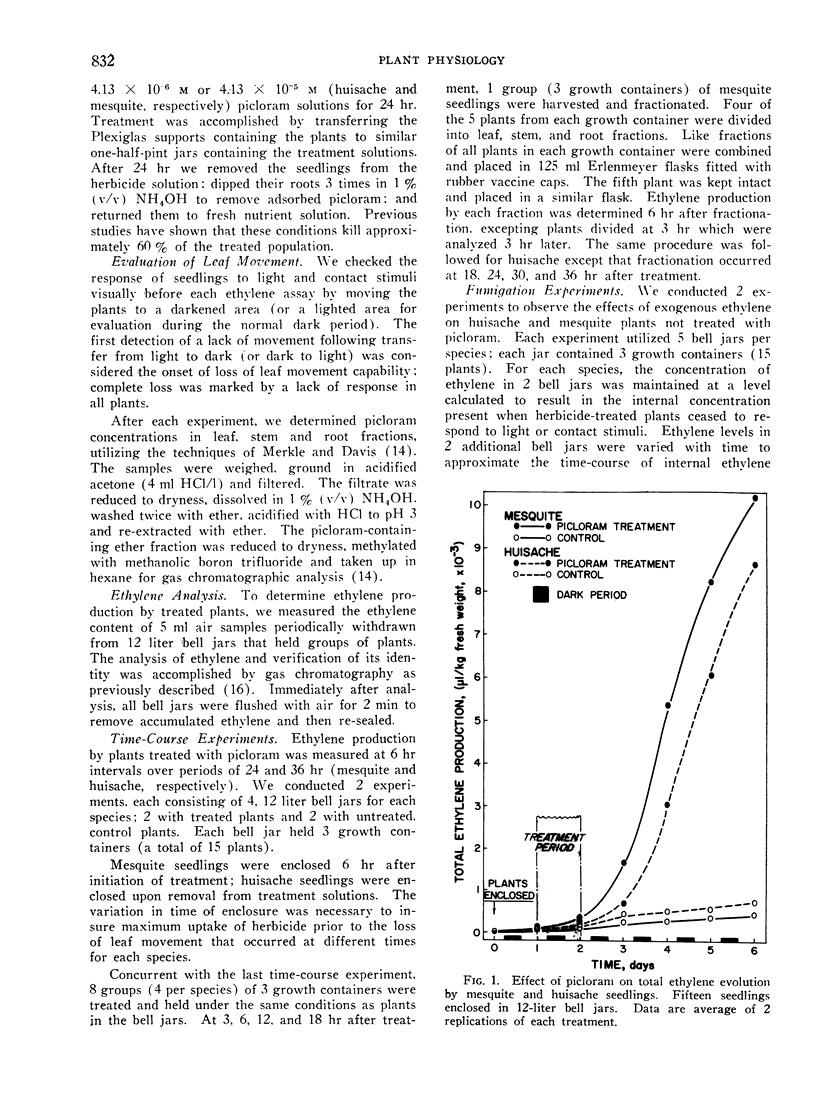
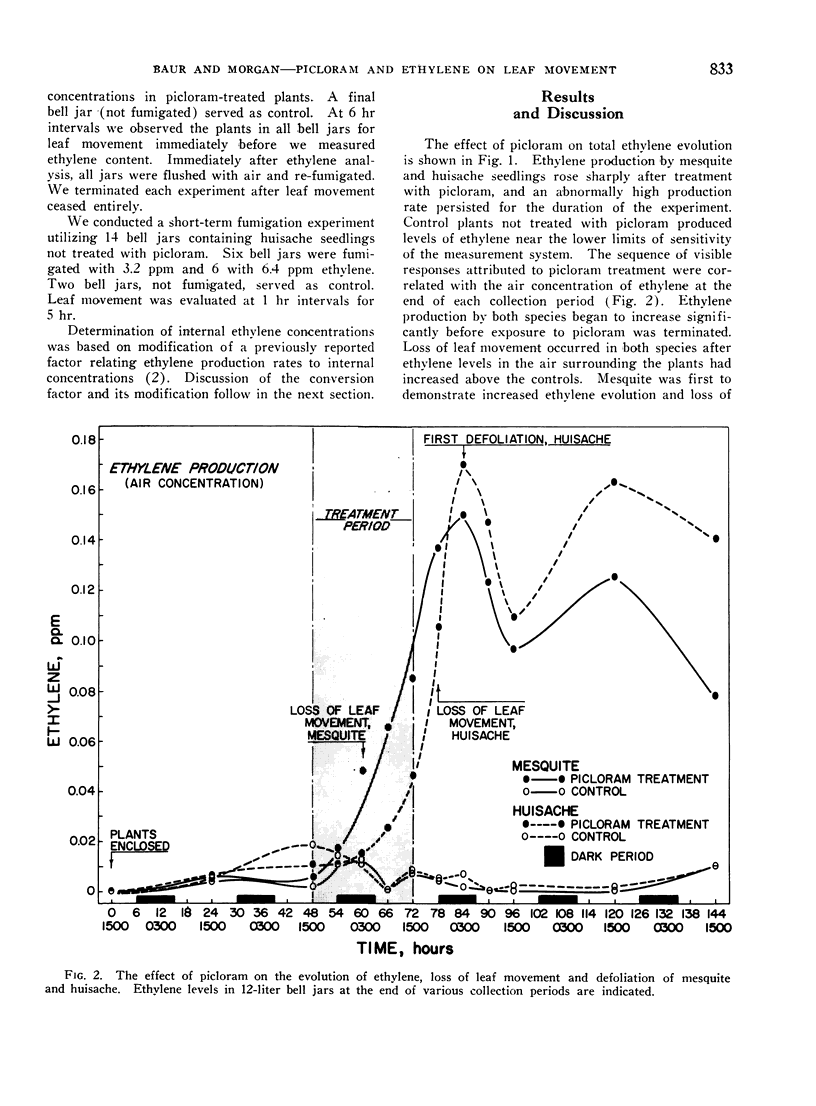
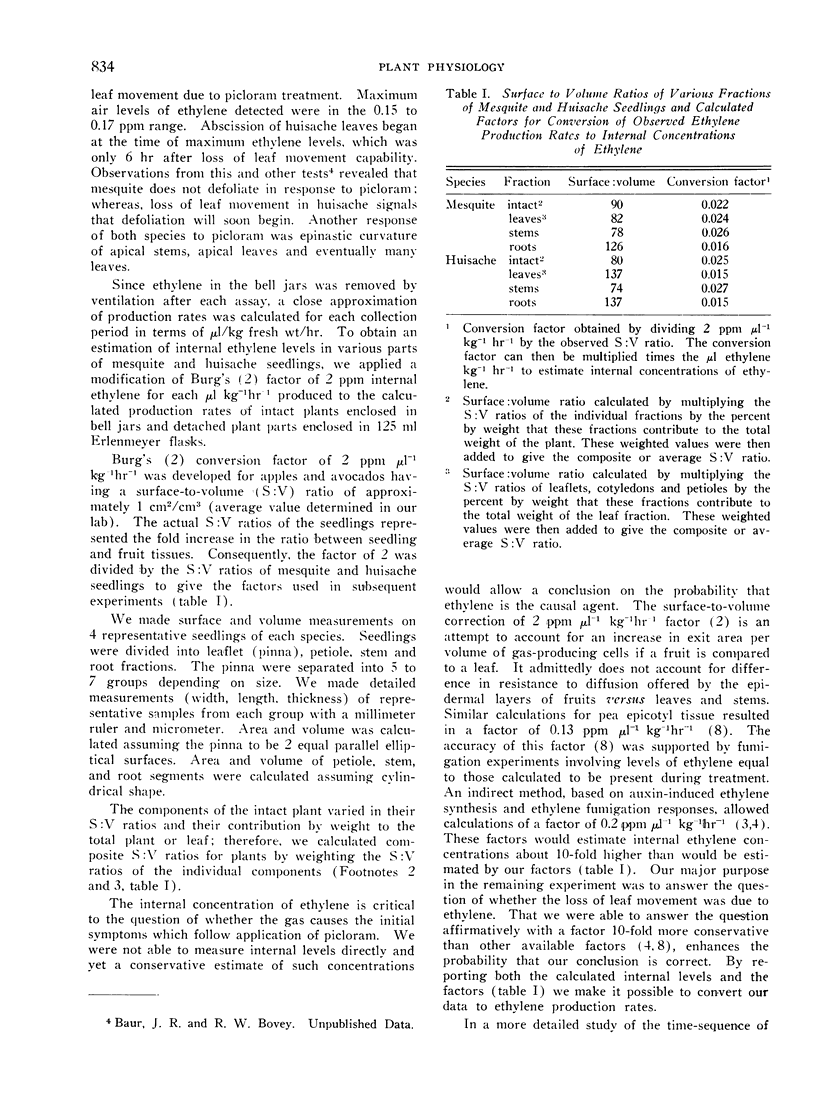
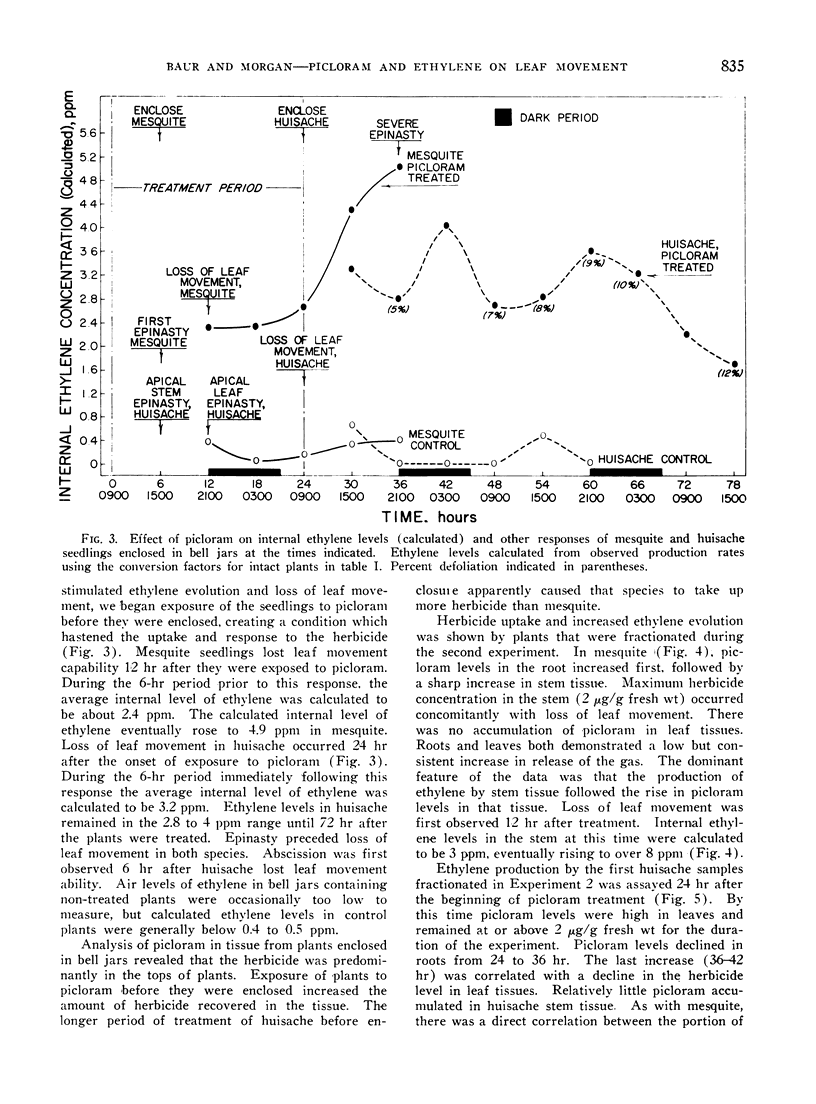
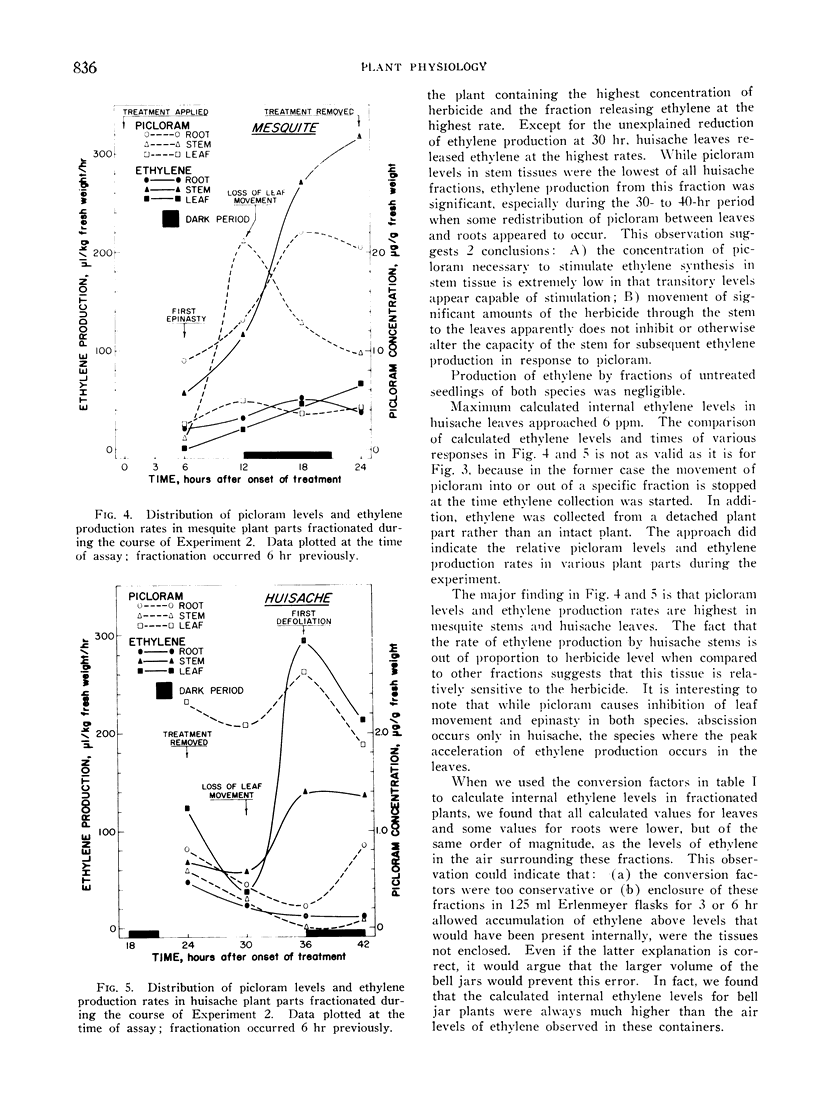
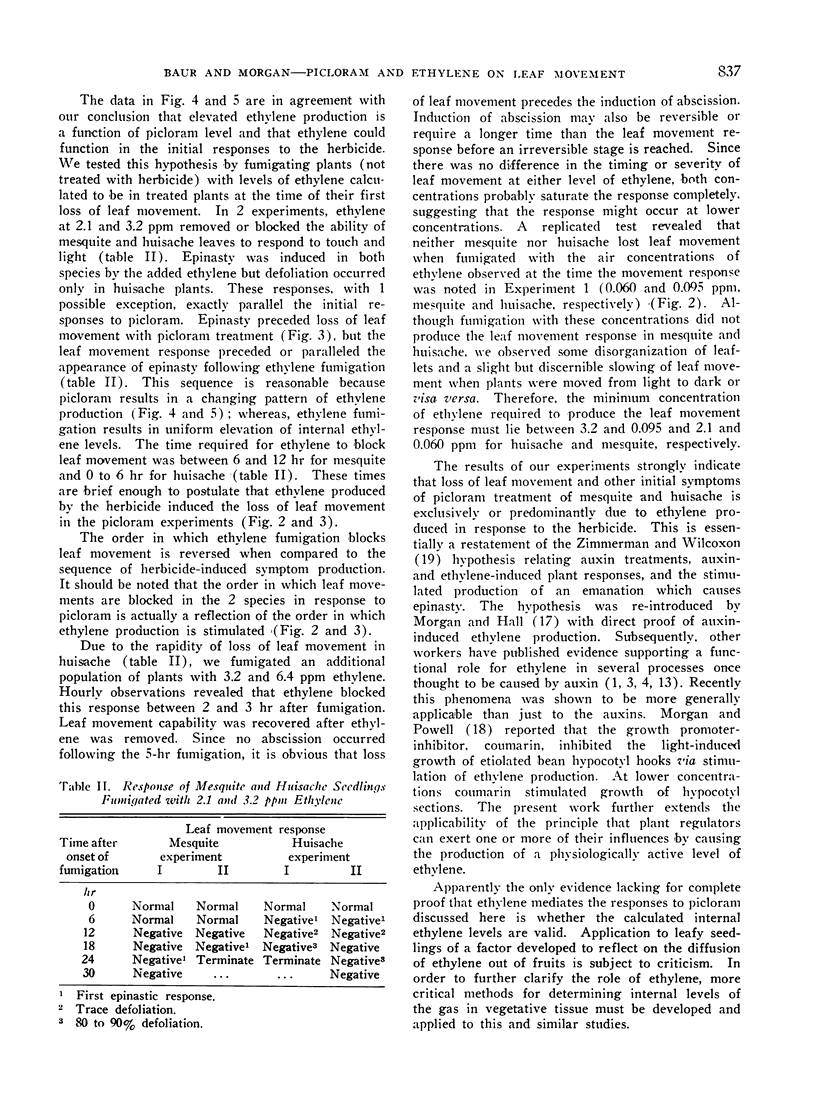
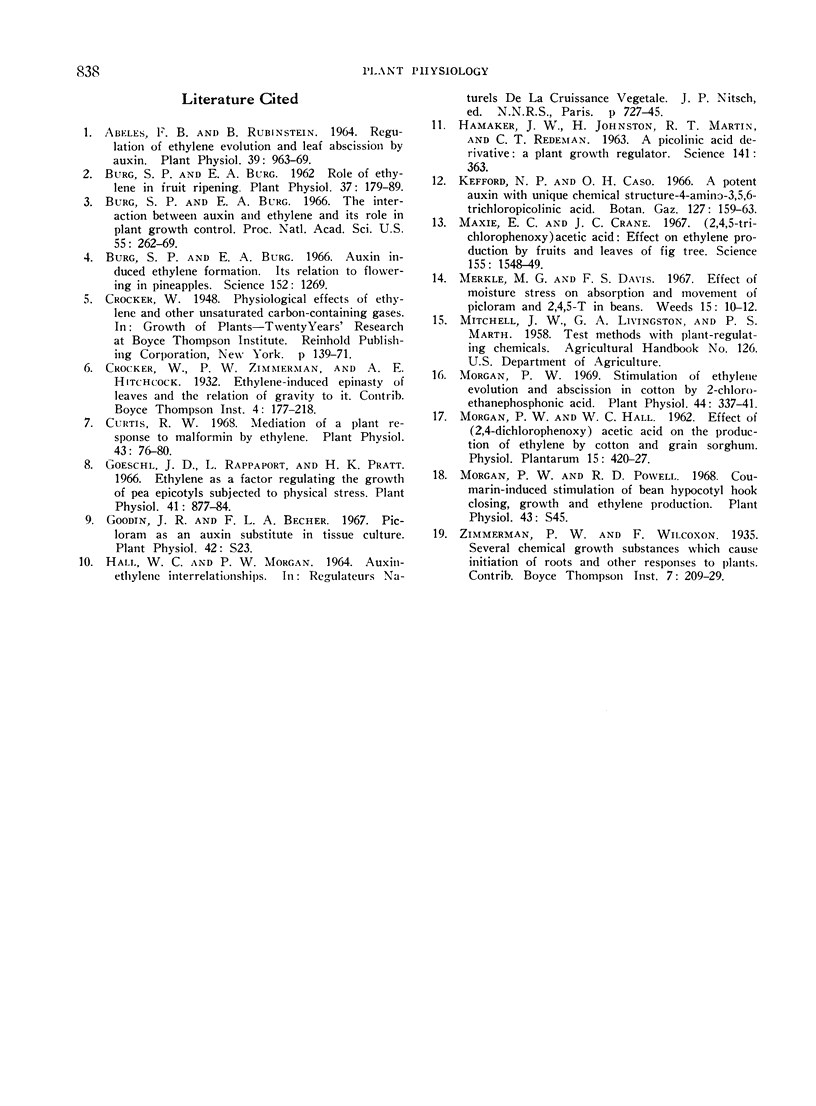
Selected References
These references are in PubMed. This may not be the complete list of references from this article.
- Abeles F. B., Rubinstein B. Regulation of Ethylene Evolution and Leaf Abscission by Auxin. Plant Physiol. 1964 Nov;39(6):963–969. doi: 10.1104/pp.39.6.963. [DOI] [PMC free article] [PubMed] [Google Scholar]
- Burg S. P., Burg E. A. Auxin-induced ethylene formation: its relation to flowering in the pineapple. Science. 1966 May 27;152(3726):1269–1269. doi: 10.1126/science.152.3726.1269. [DOI] [PubMed] [Google Scholar]
- Burg S. P., Burg E. A. Role of Ethylene in Fruit Ripening. Plant Physiol. 1962 Mar;37(2):179–189. doi: 10.1104/pp.37.2.179. [DOI] [PMC free article] [PubMed] [Google Scholar]
- Burg S. P., Burg E. A. The interaction between auxin and ethylene and its role in plant growth. Proc Natl Acad Sci U S A. 1966 Feb;55(2):262–269. doi: 10.1073/pnas.55.2.262. [DOI] [PMC free article] [PubMed] [Google Scholar]
- Curtis R. W. Mediation of a plant response to malformin by ethylene. Plant Physiol. 1968 Jan;43(1):76–80. doi: 10.1104/pp.43.1.76. [DOI] [PMC free article] [PubMed] [Google Scholar]
- Goeschl J. D., Rappaport L., Pratt H. K. Ethylene as a factor regulating the growth of pea epicotyls subjected to physical stress. Plant Physiol. 1966 May;41(5):877–884. doi: 10.1104/pp.41.5.877. [DOI] [PMC free article] [PubMed] [Google Scholar]
- Hamaker J. W., Johnston H., Martin R. T., Redemann C. T. A Picolinic Acid Derivative: A Plant Growth Regulator. Science. 1963 Jul 26;141(3578):363–363. doi: 10.1126/science.141.3578.363. [DOI] [PubMed] [Google Scholar]
- Maxie E. C., Crane J. C. 2,4,5-trichlorophenoxyacetic Acid: effect on ethylene production by fruits and leaves of fig tree. Science. 1967 Mar 24;155(3769):1548–1550. doi: 10.1126/science.155.3769.1548. [DOI] [PubMed] [Google Scholar]
- Morgan P. W. Stimulation of ethylene evolution and abscission in cotton by 2-chloroethanephosphonic Acid. Plant Physiol. 1969 Mar;44(3):337–341. doi: 10.1104/pp.44.3.337. [DOI] [PMC free article] [PubMed] [Google Scholar]


